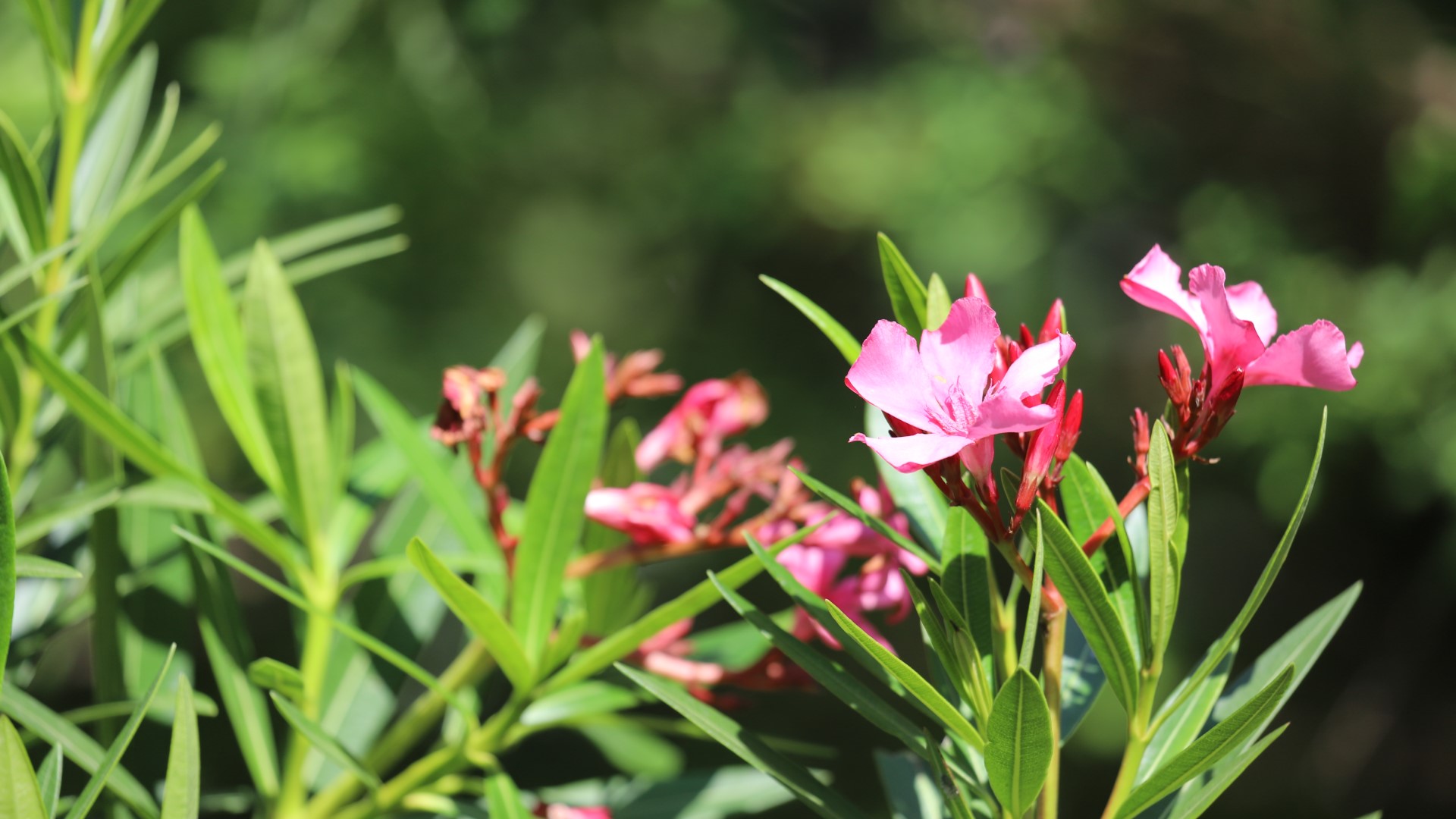Sun; evergreen and drought-hardy; may freeze to the ground in cold winters, but resprouts easily from the roots. Spring and summer blooms are showy. A variety of colors and forms are available. Oleander has been so widely cultivated for so long that its actual geographic origins are now obscure.
Many local oleanders have been affected by oleander leaf scorch, a bacterial disease which causes wilting, grayish leaves and spreads from branch to branch, with eventual death drawn out over several years. Various replacements have been proposed as a replacement for damaged hedgerows.
All parts of the plant are toxic to both humans and livestock.
None required. Cut back as needed after winter freeze damage. Oleander may appreciate some supplemental water during summer, depending on site conditions. Vulnerable to oleander leaf scorch; there is no remedy.



